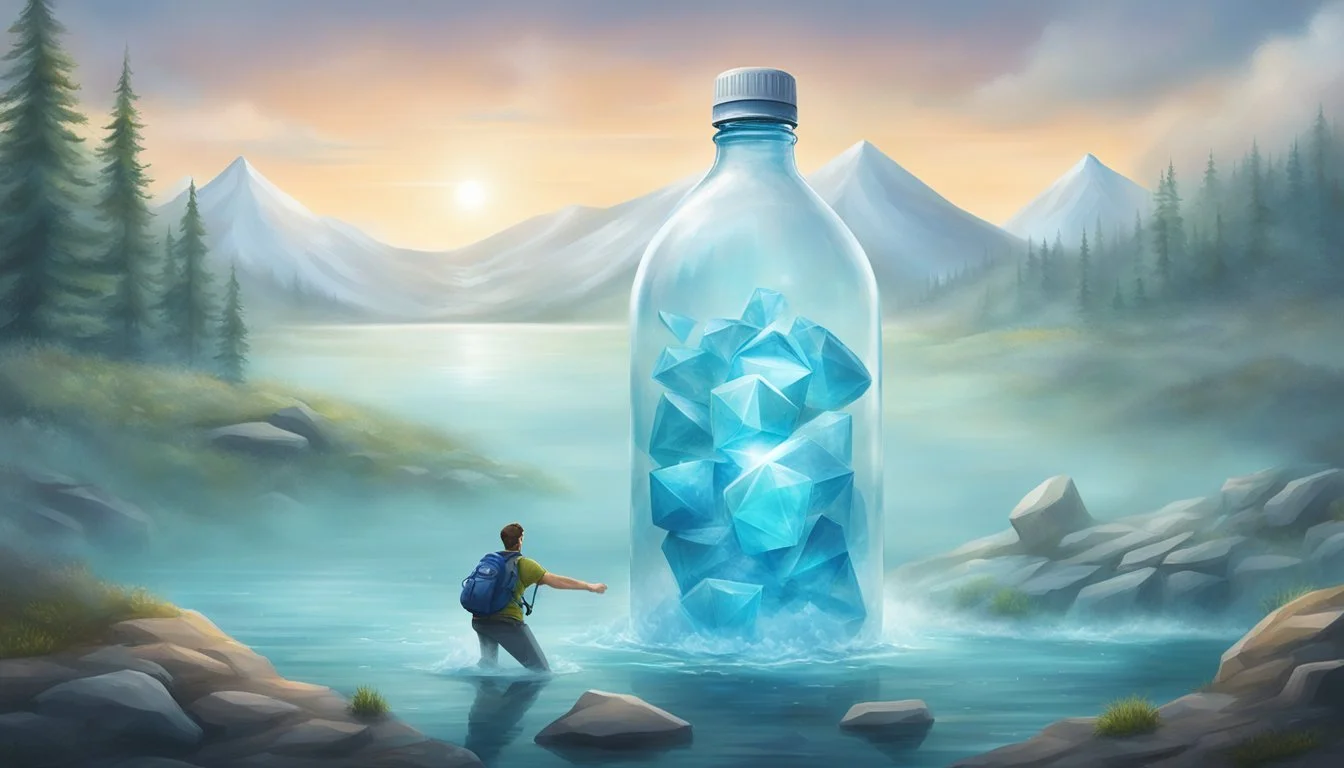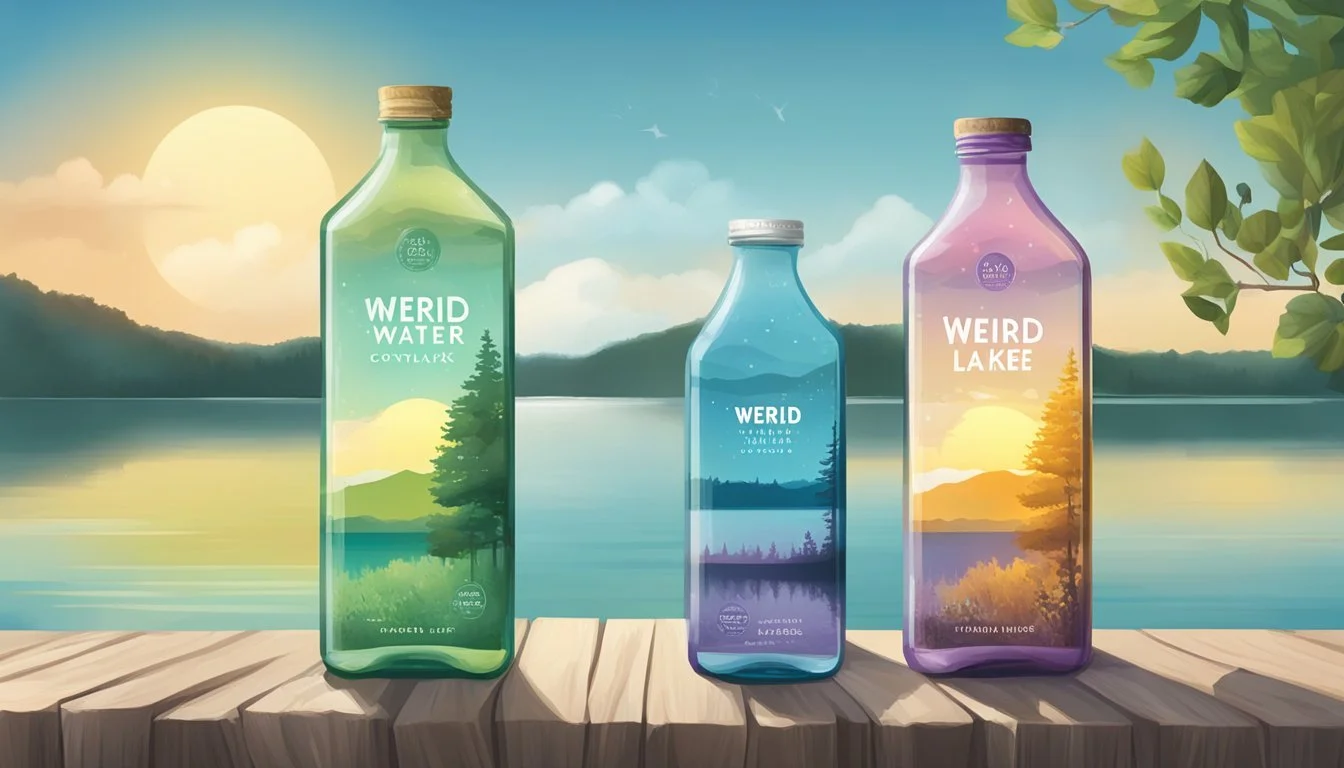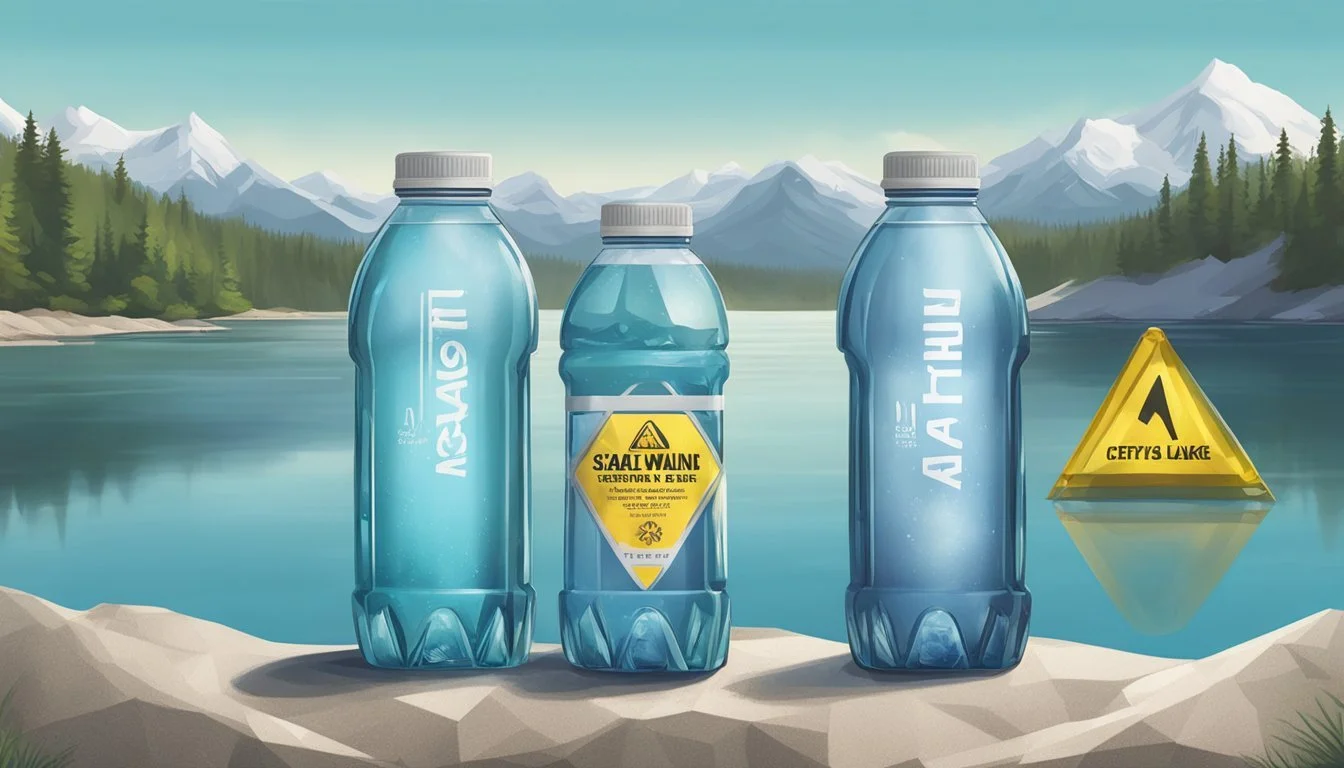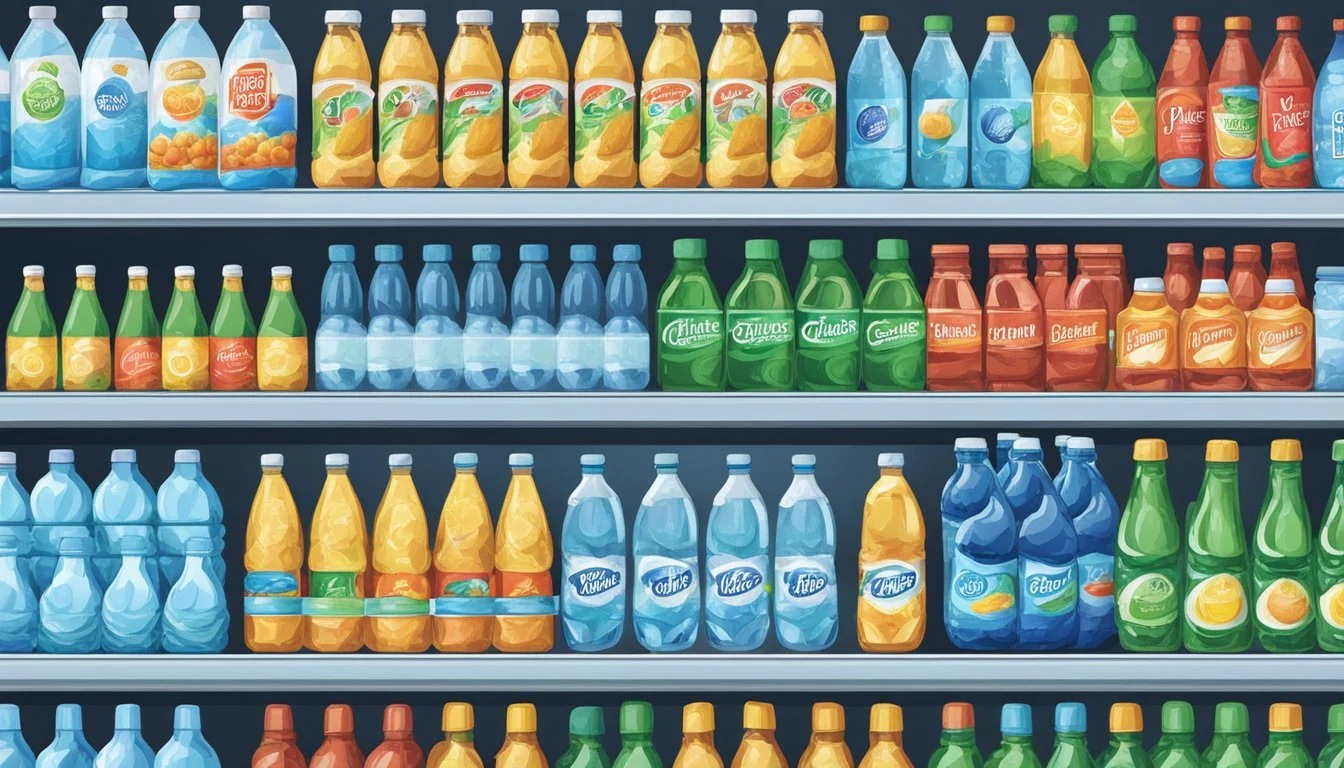Weird Water vs. Crystal Lake
A Comparative Analysis of Bottled Water Quality
When it comes to choosing between Weird Water and Crystal Lake, consumers often find themselves at a crossroads. Both brands have carved out their respective niches in a crowded bottled water market. Yet, they offer distinctly different experiences for those seeking hydration.
Weird Water stands out for its unique mineral blend, which some claim enhances its taste and potential health benefits. On the other hand, Crystal Lake enjoys a reputation for purity, boasting a rigorous filtration process that ensures consistently clean and crisp water. The debate between these two brands is more than just personal preference; it delves into what consumers value more—minerals or purity.
With various factors at play, including taste, price, and perceived health benefits, choosing between Weird Water and Crystal Lake isn't straightforward. Each brand has its loyal fans, and understanding what each offers can help make an informed decision. Whether you prioritize the mineral content or a pure taste, knowing the differences can guide you to the best choice for your lifestyle.
The Rise of Bottled Water
The popularity of bottled water has significantly increased over the past few decades. This change started with a focus on health and convenience. People began to prefer bottled water for its portability and perception of enhanced purity compared to tap water.
In the early days, brand options were limited, but today, the market is flooded with choices. Brands like Evian and Aqua Panna quickly gained a reputation for their taste and purity. Evian, originating from the French Alps, is known for its mineral-rich content.
Additionally, Fiji Water became popular for its unique source and silky taste. Bottled at the source in the Yaqara Valley of Viti Levu, Fiji Water's tropical origins contributed to its premium market status.
Crystal Geyser, another well-known name, provides natural spring water sourced from various locations. Their focus on offering affordable, high-quality spring water has made it a household name.
Various brands also highlight sustainability and eco-friendliness to attract environmentally conscious consumers. Crystal Lake, for instance, prides itself on using eco-friendly packaging and minimal carbon footprint.
To better understand the diversity in bottled water, here is a comparison table of some popular brands:
Brand Source Key Feature Evian French Alps Mineral-rich content Aqua Panna Tuscany, Italy Smooth taste Fiji Water Yaqara Valley, Fiji Tropical source Crystal Geyser Multiple U.S. Springs Natural spring water Crystal Lake Eco-friendly sources Sustainable packaging
The rise of bottled water is a testament to changing consumer preferences and the evolving market catering to demands for purity, taste, and environmental responsibility.
Understanding Water Quality
Water quality determines the safety and taste of bottled water. Key factors include pH levels, and the presence of minerals and electrolytes.
Assessing pH Levels
pH levels indicate the acidity or alkalinity of water, with a scale ranging from 0 to 14. Pure water has a neutral pH of 7. Bottled water brands like Aquafina have slightly acidic pH levels, around 6.4.
Low pH levels can lead to a metallic taste, while high pH levels have a more alkaline taste. The EPA recommends a pH between 6.5 and 8.5 for safe drinking water.
Regular monitoring of pH levels ensures that bottled water remains within the safe range, free from contaminants that could impact health.
Minerals and Electrolytes
Minerals and electrolytes, such as calcium, magnesium, and potassium, are essential for health. They support bone strength, hydration, and muscle function.
Many bottled water brands add these elements for taste and health benefits. Pure Life includes minerals, but it also contains artificial sweeteners and preservatives, which some consumers may want to avoid.
Electrolytes help maintain the body's fluid balance and are often marketed for their rehydration benefits. Checking labels for these components can help consumers choose water that aligns with their health needs.
Comparative Analysis: Weird Water vs. Crystal Lake
Weird Water and Crystal Lake have distinct characteristics in their sources, purification methods, flavor profiles, and health benefits. Each brand offers unique features that cater to different preferences.
Source and Origin
Weird Water sources its water from geothermal springs located deep within a protected volcanic region. This remote and pristine area ensures minimal human interference.
Crystal Lake, on the other hand, obtains its water from natural freshwater springs situated in a mountainous region. The spring is renowned for its crystal-clear quality attributed to the natural filtration through layers of rock and sand.
These origins indicate that both brands emphasize natural, unpolluted sources to maintain water purity.
Purification and Filtering Techniques
Weird Water employs a multi-step purification process including ozonation and UV treatment. These methods eliminate contaminants while preserving essential minerals.
Crystal Lake uses a rigorous filtration system that combines activated carbon filtering with reverse osmosis. This thorough process ensures the removal of impurities like chlorine and heavy metals, enhancing the water's safety and clarity.
Both brands prioritize effective purification techniques, though their methods differ to suit their respective water sources.
Flavor and Texture Profiles
Weird Water is often described as having a slightly sweet and mineral-rich flavor, attributed to its geothermal origins. The texture is smooth with a satisfying mouthfeel, making it a favorite among those who prefer naturally sweet water.
Crystal Lake offers a clean, crisp taste. The extensive filtration results in a refreshing and neutral flavor with no detectable aftertaste. Its texture is light and invigorating, appealing to those who enjoy pure-tasting water.
The contrast in flavor and texture highlights the unique qualities imparted by their distinct purification processes and sources.
Health Impacts and Hydration Benefits
Weird Water's mineral composition includes naturally occurring electrolytes like magnesium and calcium. This aspect enhances hydration efficiency and contributes to overall wellness, particularly after physical exertion.
Crystal Lake boasts high purity with minimal mineral content, making it suitable for individuals with specific dietary restrictions. Its clean profile also makes it an excellent option for daily consumption, offering consistent hydration without added minerals.
Both brands cater to different health and hydration needs, providing valuable options for various preferences and requirements.
Environmental and Sustainability Practices
Evaluating the environmental impact and sustainability practices of Weird Water and Crystal Lake provides insight into their commitment to the planet. This includes their approaches to packaging, water source management, and corporate responsibility.
Packaging Innovations
Weird Water and Crystal Lake employ varied strategies to enhance the sustainability of their packaging materials.
Weird Water focuses on biodegradable materials and aims to transition entirely to recycled PET bottles by 2025. This change reduces plastic waste and promotes a circular economy.
Crystal Lake, operating under stringent environmental standards, uses recyclable materials and plans to achieve zero-net emissions in their packaging processes. They emphasize reducing the carbon footprint associated with transportation and manufacturing.
Water Source Management
Weird Water and Crystal Lake prioritize sustainable water sources to minimize environmental disruption.
Weird Water sources from artisanal springs, ensuring minimal ecological impact by adhering to strict conservation practices. They engage in local watershed protection initiatives to maintain the natural balance and quality of their sources.
Crystal Lake, on the other hand, sources water from natural springs, emphasizing ecological stewardship. They implement advanced water management techniques to monitor and maintain the health of these springs, including seasonal assessments to prevent over-extraction.
Corporate Responsibility
The corporate responsibility efforts of Weird Water and Crystal Lake reflect their dedication to sustainability across various dimensions.
Weird Water integrates corporate social responsibility by investing in community projects related to clean water access and environmental education. Their operations are guided by principles of transparency and ethical conduct.
Crystal Lake commits to sustainable practices by setting ambitious goals for carbon neutrality and sustainable agriculture in their supply chain. They participate in global sustainability initiatives and continually report on their progress to ensure accountability.
Both companies demonstrate a strong commitment to mitigating their environmental impact through innovative packaging, responsible water source management, and proactive corporate responsibility practices.
Consumer Considerations
When comparing 'Weird Water' and 'Crystal Lake', consumers should pay close attention to taste preferences, price affordability, and access and availability. Each of these factors plays a vital role in determining which bottled water is the better choice.
Taste Preferences
Taste is a highly subjective factor and varies from one consumer to another. 'Weird Water' features a unique mineral blend that imparts a slightly sweet and smooth flavor. On the other hand, 'Crystal Lake' is known for its crisp and clean taste, attributed to its sourcing from natural springs.
Consumers have different taste preferences which can influence their choices. Some prefer the subtle mineral flavor of 'Weird Water', while others might favor the purer taste of 'Crystal Lake'. Conducting a blind taste test can help determine personal preference.
Price and Affordability
Price is a crucial factor for many consumers. 'Weird Water' is moderately priced, making it accessible to a wide range of consumers. Typically, it costs around $1.50 per bottle. 'Crystal Lake', on the other hand, is often priced higher at around $2.00 per bottle.
For budget-conscious buyers, 'Weird Water' might be the more affordable option. However, some consumers may be willing to pay a premium for the distinctive taste of 'Crystal Lake'. Evaluating the cost per bottle in relation to personal budget constraints is key.
Access and Availability
Availability can significantly impact consumer choice. 'Weird Water' is widely available in various retail locations, including convenience stores and supermarkets. This broad availability ensures that consumers can easily purchase it.
'Crystal Lake' is mainly found in Rite Aid locations, which might limit its accessibility for some consumers. Those who live near these stores may find it convenient to buy 'Crystal Lake', while others may struggle with limited access.
In summary, when choosing between 'Weird Water' and 'Crystal Lake', consumers should consider taste, affordability, and availability. These factors will help determine the best water for individual needs and preferences.
Regulation and Safety
The safety and regulation of bottled water are critical to ensuring it meets health standards. This includes government standards, third-party certifications, and consumer confidence.
Government Standards
In the United States, bottled water is regulated by the Food and Drug Administration (FDA). The FDA sets guidelines for contaminants, labeling, and processing practices. Bottled water must meet these standards to be sold legally.
The Environmental Protection Agency (EPA) regulates tap water, often adhering to similar health standards as the FDA. Bottled water companies must also comply with the Federal Food, Drug, and Cosmetic Act, which mandates accurate labeling and prohibits false advertising.
Despite regulation, the staffing for enforcement under various administrations has been notably light, raising concerns about consistent safety.
Third-Party Certifications
Consumers often look for third-party certifications to ensure bottled water quality. Organizations like NSF International and the International Bottled Water Association (IBWA) provide additional validation.
These certifications often require regular testing for contaminants, such as microplastics and radiological substances. For instance, the IBWA enforces its members to adhere to its Bottled Water Code of Practice, which includes annual unannounced plant inspections.
Such third-party oversight serves as an extra layer of safety assurance beyond government regulations, appealing to health-conscious consumers.
Consumer Confidence
Consumer confidence hinges on the transparency of bottled water providers. Labeling plays a significant role, as clear information about the water source and treatment methods bolster trust. Consumers can check Consumer Reports for detailed analyses of different water brands.
Studies have revealed that a significant portion of bottled water is, in fact, repurposed tap water. This information affects consumer trust, especially when combined with findings about microplastic contamination.
Thus, companies committed to transparency and subject to rigorous third-party testing often command higher consumer confidence and loyalty.
Brands in Focus
This section will compare key bottled water brands, examining market leaders, emerging alternatives, and specialty and artisan waters. Each offers unique attributes, sources, and purification methods that appeal to different consumer preferences.
The Market Leaders
Leading brands like Fiji, Evian, Dasani, and Smartwater dominate the bottled water market due to their consistent quality and strong distribution networks.
Fiji water is celebrated for its artesian aquifer source and high silica content, giving it a smooth taste.
Evian sources its water from the French Alps, offering a naturally balanced mineral profile.
Dasani undergoes a thorough purification process, ensuring a crisp and refreshing taste.
Smartwater applies vapor distillation and adds electrolytes, promoting a pure and hydrating experience.
These brands are widely available and trusted for their distinct qualities.
Emerging Alternatives
Newer entrants like Voss, LIFEWTR, and Icelandic Glacial are gaining popularity by focusing on unique sourcing and modern branding.
Voss stands out with its sleek packaging and Norwegian artesian source, known for its low mineral content and clean taste.
LIFEWTR combines purified water with added electrolytes and eye-catching bottle art, appealing to younger consumers.
Icelandic Glacial utilizes volcanic spring sources, delivering naturally alkaline water prized for its purity and taste.
These brands are carving out niches by emphasizing premium quality and innovative marketing.
Specialty and Artisan Waters
Specialty waters such as Mountain Valley and niche products from local artesian springs cater to consumers seeking unique flavor profiles and superior quality.
Mountain Valley water comes from Arkansas’s Ouachita Mountains, offering a pure, mineral-rich experience that has been popular for over a century.
Crystal Lake is praised for its clean and crisp taste, with a reputation for natural purity.
Local artisan brands often source water from pristine, untouched environments, providing a distinct taste and high-quality assurance.
These waters are often sought after for their artisanal value and the story behind their sources.
Health and Lifestyle
An informed choice between Weird Water and Crystal Lake can significantly influence health and lifestyle. This section covers hydration for athletes, the role of water in diet, and tips to enhance daily intake.
Hydration for Athletes
Athletes need optimal hydration to perform well. Weird Water offers alkaline water options that can help balance pH levels. Mineral water from Crystal Lake provides electrolytes essential for long workouts. Both brands support hydration but differ in mineral content.
For athletes, the choice of water can impact endurance and recovery. Weird Water's pH balance may reduce acid buildup in muscles. Crystal Lake's minerals aid in quick replenishment of lost electrolytes.
The Role of Water in Diet and Weight Loss
Water plays a crucial role in diet and weight loss. Drinking either Weird Water or Crystal Lake before meals can reduce appetite, aiding calorie control. Weird Water sometimes includes vitamins, complementing nutrient intake.
Crystal Lake’s mineral content supports metabolism, making it beneficial for weight loss strategies. Staying hydrated with either can prevent headaches and fatigue, common when dieting. A conscious choice between these waters can enhance weight management goals.
Enhancing Daily Intake: Tips and Tricks
Increasing daily water intake is vital for maintaining health. Here are some tips:
Flavor Enhancements: Use slices of fruit or mint in Weird Water to make it more appealing.
Scheduled Drinking: Set alarms or use apps to remind you to drink water from Crystal Lake throughout the day.
Visible Cues: Keep bottles of either water brand visible at your workspace or gym bag.
Using alkaline water from Weird Water or mineral-rich Crystal Lake can offer added benefits. Both brands make it easier to stay hydrated and maintain a healthy lifestyle.
Consumer Interaction and Influence
In evaluating Weird Water and Crystal Lake, it is crucial to consider how consumers interact with these brands and the influence they exert in shaping consumer preferences. Key areas include their presence on social media, customer reviews and testimonials, and the loyalty and community they inspire.
Social Media Presence
Weird Water and Crystal Lake maintain active profiles on platforms like Twitter, Instagram, and Facebook. Weird Water engages consumers through interactive campaigns and targeted posts that feature user-generated content. They frequently use hashtags and challenges to encourage customer participation.
Crystal Lake, known for its natural spring water, highlights its environmental efforts on social media, sharing content about sustainability. They also respond promptly to consumer queries and feedback, fostering a sense of community.
Both brands leverage social media to create engaging content and to maintain a continuous dialogue with their consumers. Their strategies differ, with Weird Water focusing more on interactive campaigns and Crystal Lake emphasizing sustainability and consumer engagement.
Customer Reviews and Testimonials
Customer reviews and testimonials play a significant role in shaping public perception. Weird Water often receives praise for its unique taste and packaging, while some reviewers note its premium pricing. Platforms like Amazon and dedicated review sites feature detailed comments from satisfied customers who appreciate the brand’s innovative approach.
Crystal Lake garners positive feedback for its clean and crisp taste. Consumers frequently highlight the brand’s transparency about its water source and its commitment to quality. Reviews on various platforms underline the consistent quality and taste of Crystal Lake, making it a favored choice for many.
Both brands benefit from a wealth of positive testimonials, which enhance their reputation and appeal among potential new customers.
Brand Loyalty and Community
Brand loyalty for Weird Water is cultivated through exclusive membership programs and limited-edition releases. They offer perks such as early access to new products and special discounts, fostering a dedicated community of repeat buyers.
Crystal Lake builds brand loyalty by emphasizing its environmental commitment and community initiatives. They organize local clean-up events and sponsorships, which resonate with eco-conscious consumers. This strengthens their connection with their customer base.
Consumers of both brands display notable loyalty, driven by distinct strategies that align with their values and interests. Weird Water’s innovative approach and Crystal Lake’s focus on sustainability both cultivate robust communities of loyal customers.
More About Weird Water
Aqua Carpatica vs Weird Water: Which Bottled Water is Better?
Cascade Mountain vs Weird Water: Which Bottled Water is Better?
Core Hydration vs Weird Water: Which Bottled Water is Better?
Crystal Geyser vs Weird Water: Which Bottled Water is Better?
Hawaii Volcanic vs Weird Water: Which Bottled Water is Better?
Hawaiian Springs vs Weird Water: Which Bottled Water is Better?
Icelandic Glacial vs Weird Water: Which Bottled Water is Better?
Mountain Valley Spring Water vs Weird Water: Which Bottled Water is Better?
Nestle Pure Life vs Weird Water: Which Bottled Water is Better?
Poland Spring vs Weird Water: Which Bottled Water is Better?
Purely Sedona vs Weird Water: Which Bottled Water is Better?
Richard's Rainwater vs Weird Water: Which Bottled Water is Better?
San Pellegrino vs Weird Water: Which Bottled Water is Better?
Solan de Cabras vs Weird Water: Which Bottled Water is Better?
Talking Rain AQA vs Weird Water: Which Bottled Water is Better?
Weird Water vs Kirkland Signature: Which Bottled Water is Better?
Weird Water vs Whole Foods 365: Which Bottled Water is Better?
Whole Foods Italian Still Mineral water vs Weird Water: Which Bottled Water is Better?
More About Crystal Lake
Aqua Carpatica vs Crystal Lake: Which Bottled Water is Better?
Cascade Mountain vs Crystal Lake: Which Bottled Water is Better?
Core Hydration vs Crystal Lake: Which Bottled Water is Better?
Crystal Geyser vs Crystal Lake: Which Bottled Water is Better?
Crystal Lake vs Essence pH10: Which Bottled Water is Better?
Crystal Lake vs Proud Source: Which Bottled Water is Better?
Hawaii Volcanic vs Crystal Lake: Which Bottled Water is Better?
Hawaiian Springs vs Crystal Lake: Which Bottled Water is Better?
Ice Mountain vs Crystal Lake: Which Bottled Water is Better?
Icelandic Glacial vs Crystal Lake: Which Bottled Water is Better?
Kirkland Signature vs Crystal Lake: Which Bottled Water is Better?
Liquid Death vs Crystal Lake: Which Bottled Water is Better?
Mountain Valley Spring Water vs Crystal Lake: Which Bottled Water is Better?
Nestle Pure Life vs Crystal Lake: Which Bottled Water is Better?
Poland Spring vs Crystal Lake: Which Bottled Water is Better?
Purely Sedona vs Crystal Lake: Which Bottled Water is Better?
Richard's Rainwater vs Crystal Lake: Which Bottled Water is Better?
San Pellegrino vs Crystal Lake: Which Bottled Water is Better?
Simple Truth vs Crystal Lake: Which Bottled Water is Better?
Solan de Cabras vs Crystal Lake: Which Bottled Water is Better?
Talking Rain AQA vs Crystal Lake: Which Bottled Water is Better?
Whole Foods 365 vs Crystal Lake: Which Bottled Water is Better?
Whole Foods Italian Still Mineral water vs Crystal Lake: Which Bottled Water is Better?








